La sottile arte del follow-up con l'automazione delle e-mail
Come massaggiare i vostri potenziali clienti per convincerli a dare un'occhiata, in modo automatico.
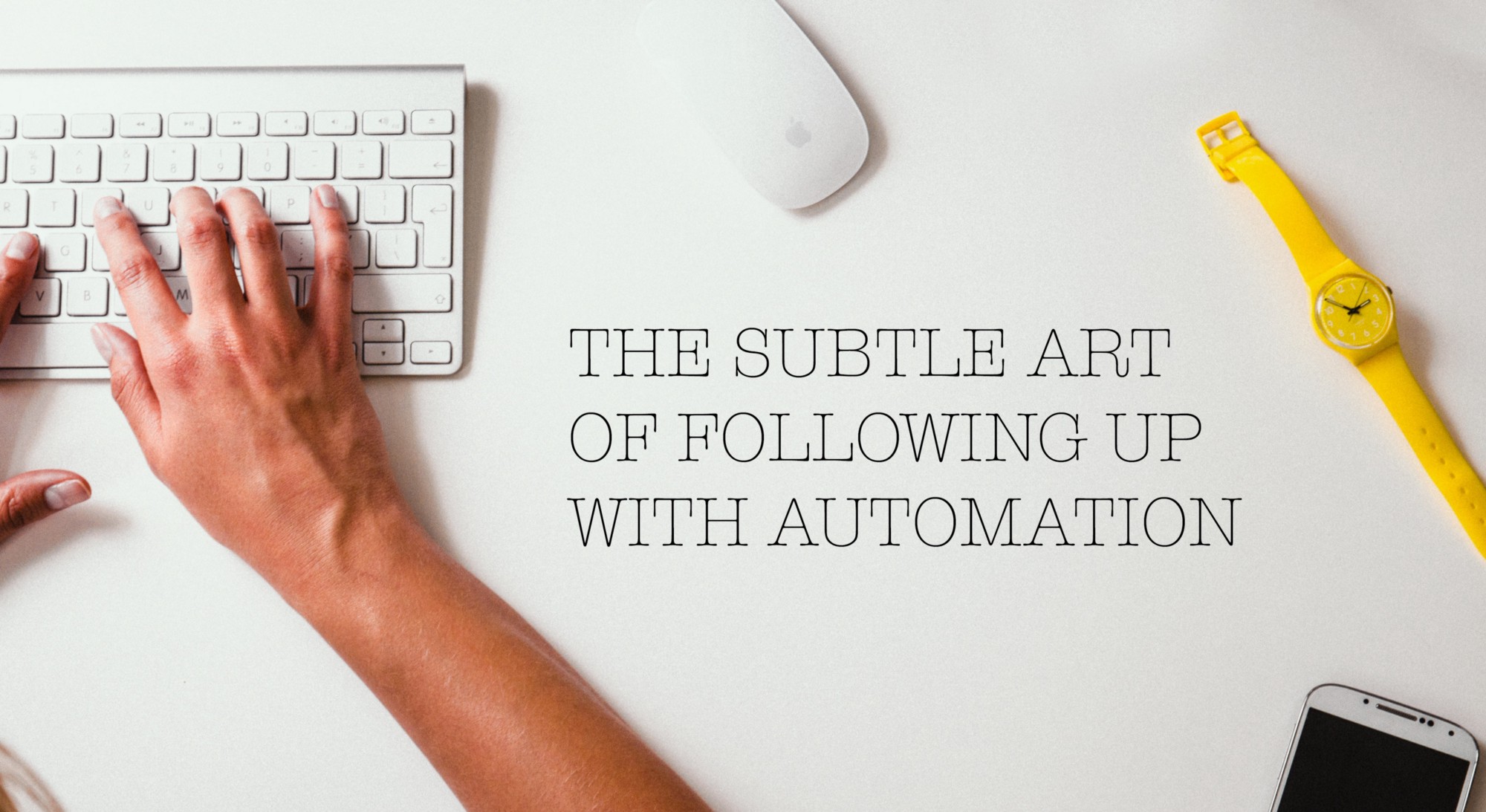
Quindi.
Avete trovato dei contatti succulenti grazie a tattiche intelligenti sui social media e a tecniche di crescita.
Vi siete messi in contatto con una fantastica e-mail a freddo che sembra quasi scritta a mano, ma che in realtà è stata inviata in lotti automatizzati mentre dormivate profondamente, utilizzando i dati e un strumento di automazione delle e-mail a freddo.
Avete raggiunto un punto di forza con uno dei vostri potenziali clienti e loro vi rispondono con un'e-mail.
Scartatelo.
Dato che avete inviato migliaia di email, centinaia di potenziali clienti vi rispondono con email.
E adesso, genio?
Se avete un tasso di risposta di circa 3% e utilizzate l'automazione delle e-mail per passare da 10 a 300 e-mail al giorno, avrete 270 nuovi contatti da seguire ogni mese.
Ognuno di essi richiede il vostro valore, la vostra attenzione, la vostra pazienza e la vostra disponibilità per essere trasformato in un affare. Infatti, le statistiche mostrano che l'80% delle vendite richiede almeno cinque follow-up, il che significa che dovrete inviare più di mille e-mail per dare a tutti quei potenziali clienti l'attenzione che meritano.
In breve: se non siete all'altezza del compito, l'automazione vi seppellirà sotto terra piuttosto che farvi salire alle stelle.
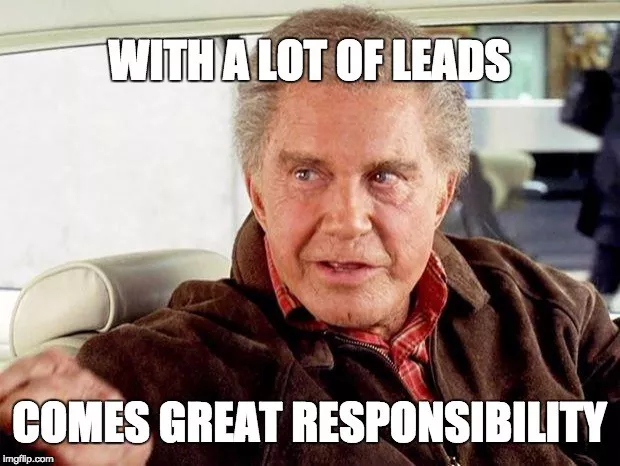
Questo post non riguarda l'importanza del follow-up e non riguarda semplicemente come farlo. Si tratta di come essere intelligenti, di come costruire il massimo numero di relazioni umane fruttuose senza affogare nella propria pipeline, di come fare di più con meno.

Iniziamo con il "perché
Perché preoccuparsi di seguire la vicenda?
Perché funziona. Il follow-up porta alle vendite.
Le statistiche mostrano che l'80% delle vendite avviene dopo almeno cinque follow-up.
Le statistiche mostrano anche che 44% dei rappresentanti di vendita rinunciano dopo il primo rifiuto.
Il risultato è migliore:
- 22% interrompere il follow-up dopo due rifiuti
- 14% smettere di seguire dopo tre
- 12% smettere di seguire dopo quattro
👉🏼 92% dei rappresentanti di vendita si arrendono prima del quinto follow-up cruciale.
Avete letto bene: potete battere la 92% dei rappresentanti di vendita semplicemente essendo persistenti.
Ma è più facile a dirsi che a farsi. La maggior parte dei venditori sa che dovrebbe seguire il cliente con costanza, ma ha paura di farlo. Hanno paura di essere rifiutati.
Inviare innumerevoli e-mail a qualcuno per poi essere ignorati o rifiutati più volte vi fa sentire fastidiosi e nessuno vuole essere fastidioso.
Ma: cosa avete da perdere, in realtà?
Il primo contatto è facile. Avete superato l'ostacolo di avvicinare qualcuno. Avete organizzato l'incontro, fatto la telefonata, inviato l'e-mail. Avete fatto il vostro lavoro, vi sentite bene con voi stessi. Ora dipende da loro, giusto?
È qui che si sbaglia.
Mettetevelo in testa: se otterrete una risposta dal vostro prospect dipende da voi. Non avete diritto a nulla e il gioco dell'attesa non vi porterà da nessuna parte.
Perché fare follow-up? Perché è un bene per gli affari.
Avete bisogno di uno strumento CRM
Prima di trasformarvi in un supereroe del follow-up delle e-mail, dobbiamo mettervi al posto di guida.
Ricordate che si presume che abbiate usato l'automazione per l'outreach personalizzato in scala. Nessun trucco magico sarà valido se non siete attrezzati per gestire le ondate di risposte che le vostre campagne outbound automatizzate scatenano.
È qui che entriamo nel regno del software CRM. Uno strumento che consente di costruire relazioni umane con una moltitudine di potenziali clienti contemporaneamente.
Noi di Salesflare crediamo che la maggior parte degli strumenti CRM raggiunga l'obiettivo opposto: vi costringono a registrare le chiamate, ad aggiornare i contatti, ad allegare le e-mail e ad altre inutili attività amministrative che gli esseri umani non dovrebbero fare. Vi tengono lontani da ciò che conta davvero: parlare con i clienti potenziali.
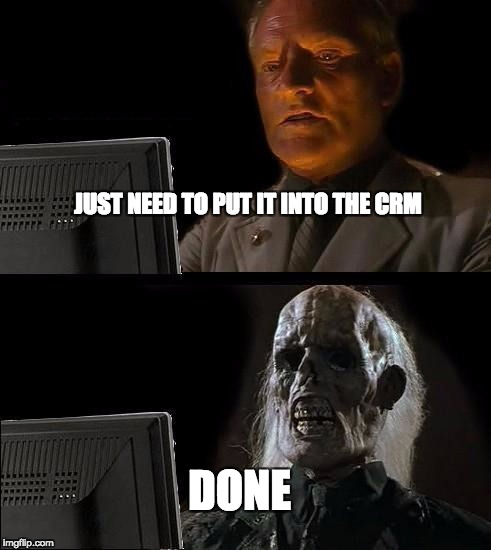
Abbiamo costruito Salesflare come uno strumento che vi aiuta senza che voi dobbiate aiutarlo per primi. Qualcosa che sia più un assistente alle vendite che un foglio di calcolo.
In futuro utilizzeremo l'Salesflare come CRM di riferimento nell'equazione di follow-up, senza rendere la tattica esclusiva.
Automatizzate tutto ciò che non vi serve
Per concentrare tutto il vostro tempo e il vostro talento sul follow-up e sulla creazione di relazioni, dovete prima liberarvi di tutto ciò che vi impedisce di farlo.
La tecnologia è maturata al punto da non richiedere più la supervisione di un adulto. Approfittatene. Fate in modo che i robot si occupino del lavoro dei robot e voi possiate concentrarvi sulle cose che contano.
È possibile automatizzare praticamente tutto fino al punto in cui è necessario partecipare alla conversazione. Non è necessario alcun codice, basta una combinazione di Salesflare e Zapier.
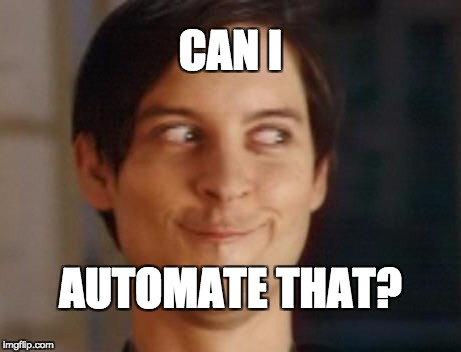
Zapier consente di collegare tra loro le app SaaS e di farle lavorare insieme in flussi autonomi. L'idea è piuttosto semplice: ogni app ha una serie di trigger e una serie di azioni. È sufficiente indicare quale trigger di un'applicazione si vuole innescare quale azione nell'altra.
Un'azione attivata è chiamata Zap. A seconda della complessità del flusso, saranno necessari uno o più Zap per farlo funzionare.

L'esempio più pertinente è quello di inviare automaticamente i lead dal vostro pianificatore di riunioni al vostro CRM.
Il risultato sarebbe questo:
- Potete inviare e-mail personalizzate su scala utilizzando i flussi di lavoro delle e-mail in Salesflare. (Volete vedere come? Ecco un cliente che mostra come utilizza i flussi di lavoro via e-mail per il prospecting).
- Nell'e-mail, suggerite loro di prenotare un incontro con voi attraverso il link personale del vostro programmatore di incontri (come YouCanBook.me o Calendly).
- Avete impostato Zapier per creare automaticamente un account/azienda, un contatto e un'opportunità nel vostro CRM, Salesflare. È anche possibile creare automaticamente un'attività di follow-up e memorizzare altre informazioni in campi personalizzati o in una nota interna. Basta usare l'immaginazione. 🤯
Ora basta lanciare una campagna outbound e la vostra pipeline di vendita si riempirà automaticamente di contatti, pronti per essere seguiti.
Naturalmente i vostri contatti non devono provenire necessariamente dalle e-mail. Potete anche utilizzare Zapier per inviare lead al vostro CRM da moduli (ad esempio Typeform, Google Forms), Facebook Lead Ads o chatbot (Collect.chat, ManyChat, Chatfuel). Sfogliate i nostri modelli Zapier per trarre ispirazione.
Come vincere al follow-up
D'ora in poi sarai solo tu a decidere.
Ne abbiamo già parlato in precedenza: l'unico superpotere di cui avete bisogno è la costanza. La corsa si vince continuando a correre, non essendo veloci.
Come vincere nel follow-up? Continuare finché non si ottiene una risposta, indipendentemente da quale sia. Ricevere un "no" non significa perdere. Vi permette di passare a quello successivo e di investire il vostro tempo e i vostri talenti dove è importante.
Questa è la mentalità di cui avete bisogno per entrare in gioco. Ora aggiungete i seguenti 11 ingredienti alla formula per diventare un campione del gioco.
1. L'esecuzione è qualcosa, il tempismo è tutto
Per "risposta" intendo proprio risposta. Non ricevere un'e-mail di risposta non conta e non deve fermarvi.
Troppo spesso i venditori pensano che il silenzio sia un segno di rifiuto, mentre in realtà si tratta solo di un cattivo tempismo.
Innanzitutto, la vostra e-mail potrebbe essersi persa nel disordine e nella confusione. L'utilizzo del tracciamento delle e-mail può fare chiarezza. Se si utilizza la barra laterale delle e-mail di Salesflare per Gmail o Outlook o le e-mail del CRM stesso, si può sapere se un'e-mail è stata aperta o meno.
Anche se il destinatario ha aperto l'e-mail, ci sono ancora molte ragioni possibili, oltre al rifiuto, per cui i potenziali clienti non rispondono all'e-mail:
- non sono disponibili (malattia, viaggio, problemi personali)
- sono nel mezzo di qualcos'altro
- hanno semplicemente dimenticato di rispondere
Qualunque cosa sia, non prendetela sul personale. Pensare di non aver ricevuto un'e-mail a causa di un rifiuto è una mentalità perdente. Cambiate le cose: supponete che il momento non fosse quello giusto e riprovate.
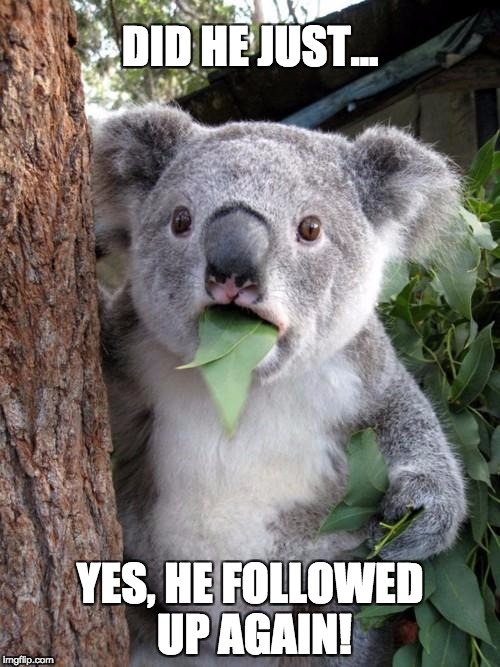
Forse vi hanno ignorato perché non sono interessati, forse no.
L'unica cosa che sapete con certezza è che non lo sapete. Uscite dalla terra dei "forse" e seguiteli fino a quando non lo saprete. Gli unici risultati di cui dovreste accontentarvi sono il "sì" e il "no".
Nel gioco del follow-up, ricevere un "no" non significa perdere, ma vincere. Quando qualcuno vi dice che non è interessato, potete spostarvi e concentrare i vostri sforzi sul prossimo prospect. L'unico modo per perdere nel follow-up è rimanere fermi al "forse".
2. Inseguire la chiarezza piuttosto che il gradimento
Perché è così difficile guardare al di là del silenzio e continuare a seguire finché non si riesce a contattare qualcuno?
Avete paura di essere fastidiosi.
Beh, indovinate un po': non siete più al liceo. Essere popolari non farà crescere la vostra attività. Le vendite sì.

In altre parole: puntate a sette persone che non vi apprezzano e tre che fanno affari con voi, piuttosto che a dieci persone che vi apprezzano e zero che fanno affari con voi.
I sette che si allontanano da voi perché state cercando di dare loro valore, non meritano comunque la vostra energia. Investite l'energia nelle persone che contano.
3. Sapere quando fermarsi
Alcune persone usano il silenzio per dirvi che non sono interessate.
Come regola generale, cinque contatti senza risposta equivalgono a un "no". Potete tranquillamente pensare che non siano interessati al valore che avete da offrire e investire le vostre energie su qualcun altro.

Un'altra grande idea può essere quella di fare un passo indietro quando si tratta di vendere e chiedere prima la loro opinione su qualcosa. Potrebbe trattarsi di una semplice domanda personale, oppure potrebbe essere un po' più formale e automatizzata utilizzando una piattaforma specializzata per il feedback degli utenti, come Mopinion, dove è possibile raccogliere il feedback via e-mail.
4. Essere presenti senza essere stantii
A quali intervalli di tempo si dovrebbe fare un follow-up dopo aver inviato la prima e-mail?
Iniziate con decisione e diminuite la frequenza nel tempo. Più a lungo un potenziale cliente non risponde, più è probabile che la tempistica non sia quella giusta.
Ecco uno schema generale da cui partire:
- Giorno 1: 1° email di follow-up
- Giorno 3: 2° follow-up
- Giorno 7: follow-up in 3D
- 14° giorno: 4° follow-up
- Giorno 25: 5° follow-up
- Dopo: una volta al mese
Se avete stabilito un legame con il vostro prospect senza che sia immediatamente interessato al vostro prodotto, ha comunque senso seguirlo una volta al mese, solo per mantenere il rapporto. Giocate a lungo termine. La vostra rete è il vostro valore netto, non sapete mai quali vantaggi può portare una connessione.
Per quanto riguarda il cold outreach, potete facilmente automatizzarlo utilizzando le sequenze del vostro strumento di automazione delle e-mail.
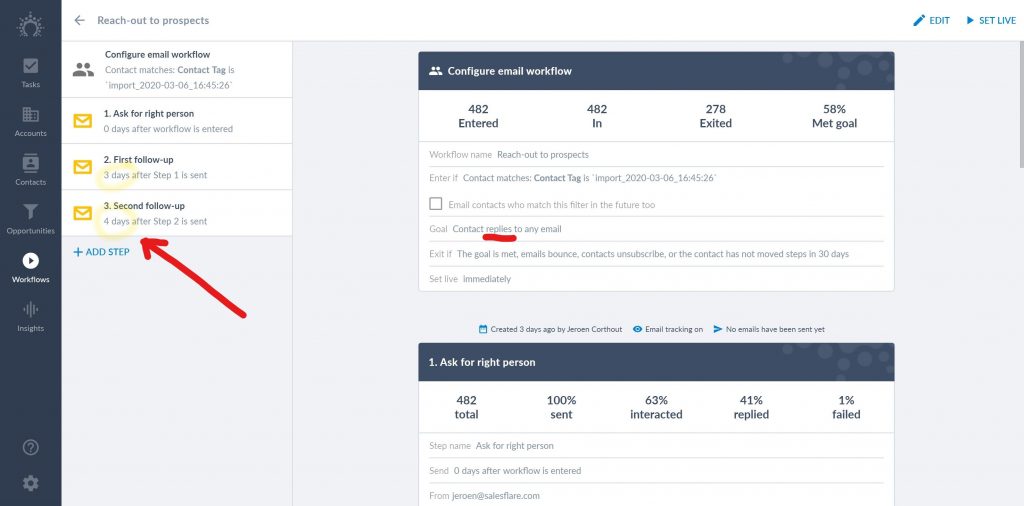
Potete replicare perfettamente la vostra routine di follow-up in un flusso di e-mail Salesflare e persino aggiungervi una certa flessibilità. Ad esempio, se nell'e-mail c'è un link al vostro calendario per consentire ai potenziali clienti di prenotare una chiamata con voi, potete fare in modo che la sequenza si interrompa quando fanno clic su quel link.
5. Utilizzare promemoria di follow-up
I follow-up non sono necessari solo quando si fa outreach a freddo. Potreste aver già fatto dei progressi con un prospect, ma le linee si raffreddano di nuovo prima che ve ne accorgiate. È vostro compito mantenere viva la relazione. Ricordate: non avete diritto a nulla.
"Non c'è bisogno di scriverlo, me lo ricorderò".
- No, non lo farai.
Il vostro cervello non è una cassaforte in cui memorizzare i dati, c'è la tecnologia per questo. Non c'è modo di non commettere errori dovendo tenere traccia di più opportunità allo stesso tempo. Dimenticherete di seguire le opportunità e perderete le vendite.
È qui che entra in gioco il vostro CRM. Fatevi dire quando dovete fare un follow-up, creando attività semplici e/o promemoria, in modo da poter concentrare le vostre forze su ciò che conta: scrivere e-mail di successo per costruire relazioni.
Per creare un'attività nell'Salesflare, utilizzare la casella superiore della schermata Attività.
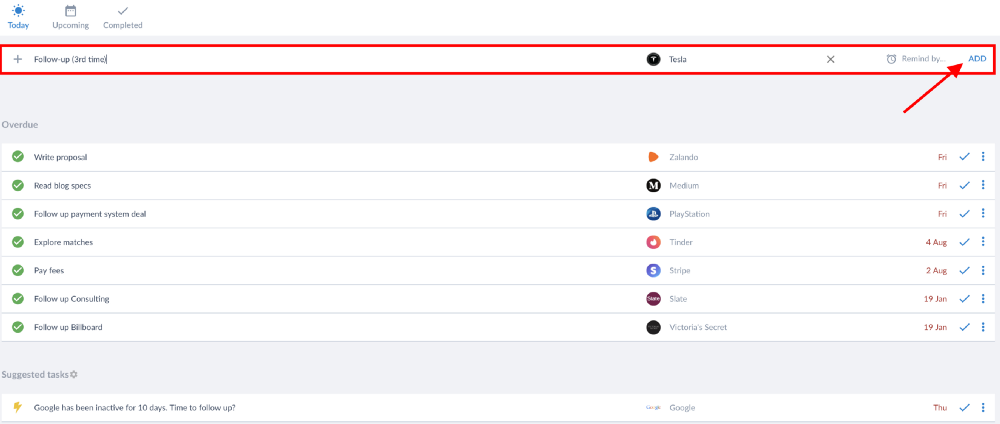
Non saremmo Salesflare se non avessimo qualche asso nella manica per l'automazione. Oltre ai compiti, ci assicureremo che teniate gli occhi sulla palla con promemoria automatici di inattività. Questi si attiveranno dopo 10 giorni di inattività sulle opportunità nella vostra pipeline di vendita.
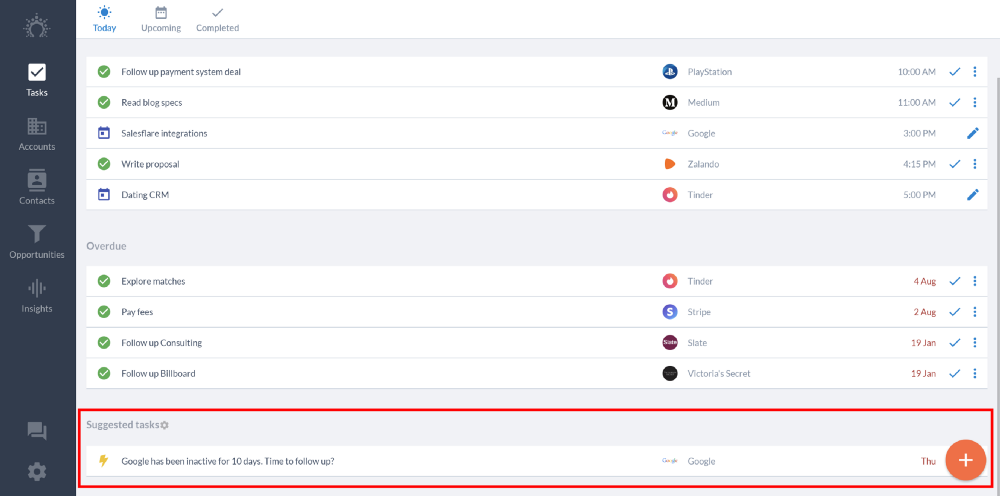
10 giorni è l'impostazione standard, ma è possibile personalizzare queste tempistiche in base alle fasi della pipeline di vendita. Basta andare in Impostazioni > Personalizza pipeline, fare clic sulla matita per modificare e impostare un numero di giorni personalizzato per i promemoria di inattività.
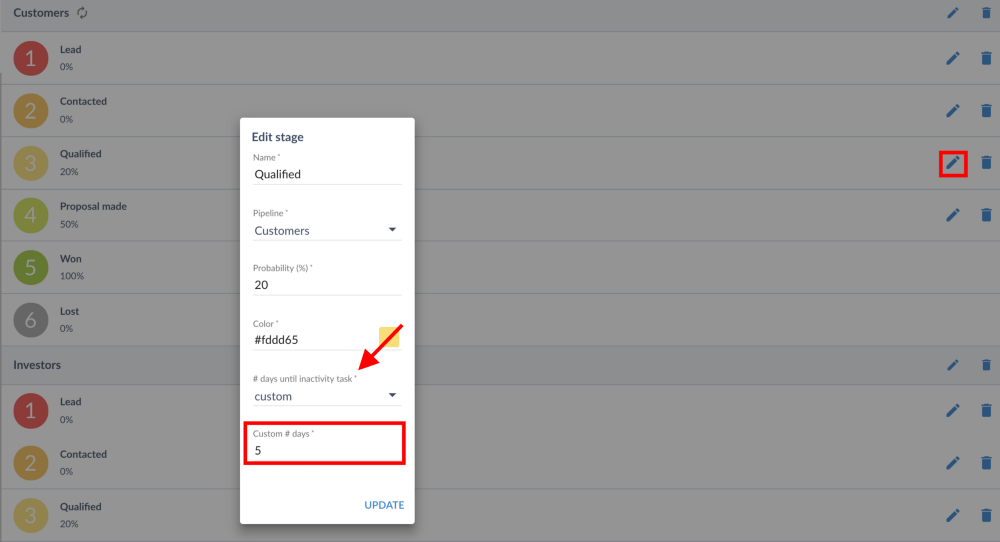
C'è ancora di più...
In Salesflare è anche possibile inviare e-mail di follow-up automatiche in base a fattori scatenanti, come ad esempio i cambiamenti di fase.
Esempi:
- Un lead ha risposto alla vostra e-mail e ha prenotato una telefonata con voi. Poiché questo lead viene automaticamente spinto dal pianificatore di incontri alla pipeline di vendita nel vostro CRM, viene inviata automaticamente un'e-mail per confermare la telefonata. Rendetela ancora più speciale inviando un contenuto rilevante.
- La telefonata è andata bene e il lead è passato alla fase successiva della pipeline. Questo fa scattare un'e-mail che invita il lead alla vostra community di Facebook per farlo sentire speciale.
- Avete concordato i termini con un lead e quando passa alla fase successiva della vostra pipeline, gli viene inviata un'e-mail di proposta automatica.
- Vendete servizi Saas. Il periodo di prova di un lead è scaduto, senza che abbia intrapreso un'azione per iniziare a pagare. Quando passa alla fase "Perso", viene attivata un'e-mail per convincerlo ad abbonarsi o almeno a prolungare la prova.
6. Non deve essere sempre un'e-mail
Il follow-up e l'e-mail vanno di pari passo, ma c'è dell'altro.
Sebbene l'e-mail sia ancora la spina dorsale della comunicazione aziendale, altri mezzi di comunicazione possono offrire di più in termini di recapitabilità, rapidità di risposta ed effetto complessivo sul prospect.
Il gioco lungo: l'e-mail
L'e-mail è l'opzione più sicura e affidabile. Vi permette di sollecitare delicatamente il vostro potenziale cliente più volte senza essere invadenti. Lasciate al potenziale cliente il controllo su quando e come rispondere, ma potreste anche impiegare molto tempo per raggiungere i vostri obiettivi.
Per una risposta più rapida: telefonare
Rispetto alle e-mail, una chiamata telefonica è più difficile da ignorare. Le persone sono più propense ad alzare il telefono che a rispondere alle vostre e-mail entro 2 minuti.
Lo stesso motivo rende le telefonate più invadenti delle e-mail. Ognuno di noi preferisce fare le cose nel proprio tempo libero e le telefonate di follow-up non fanno proprio rima con questo. Il rischio di trasformare un "forse" in un "no" è più alto per le telefonate che per le e-mail, perché la possibilità di apparire fastidiosi è maggiore.
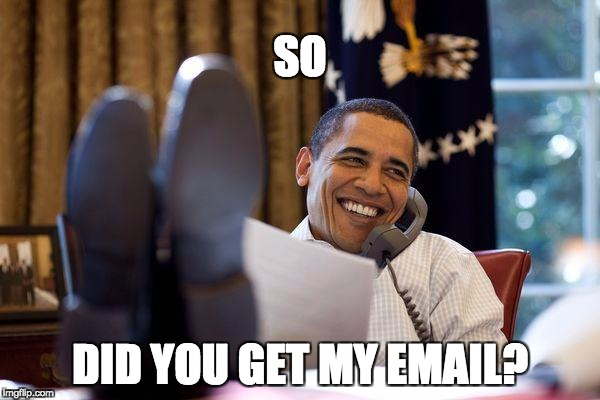
Il fatto che siate fastidiosi o meno dipende sempre da voi. C'è una differenza tra chiamare qualcuno una volta o dieci volte al giorno. Il primo si chiama mostrare interesse, il secondo stalking. Siete stati avvertiti.
Potete cercare sistemi telefonici VoIP per aziende e utilizzare molte funzioni automatizzate, come le risposte automatiche, per rendere il processo di chiamata a freddo meno dispendioso in termini di tempo. Tuttavia, non disponiamo ancora di robot per le nostre telefonate, quindi per il momento la tattica migliore è quella di impostare promemoria strategici e utilizzare propri script per le chiamate a freddo.
Il compromesso: SMS
Se i vostri potenziali clienti impiegano troppo tempo a rispondere alle e-mail e non rispondono al telefono, potreste provare con gli SMS. Come mezzo di comunicazione, non è ingombrante come le e-mail e meno invadente delle telefonate, il che lo rende piuttosto efficace per catturare l'attenzione dei vostri clienti.
Potete automatizzare l'invio di SMS ai vostri clienti potenziali in modo simile a come abbiamo automatizzato le e-mail, collegando il vostro CRM a una delle tante app di invio SMS disponibili con Zapier.
Benvenuti nel 21° secolo: i social media
Le persone ricorrono sempre più spesso alle piattaforme dei social media e alle loro funzionalità di chat per comunicare, non solo nella vita privata. Ogni giorno le mie applicazioni LinkedIn e Facebook Messenger si riempiono di nuovi messaggi in arrivo da tutto il mondo.
Ha senso stabilire una relazione virtuale sui social media una volta che voi e il vostro potenziale cliente avete stabilito un primo contatto amichevole. Seguire il vostro potenziale cliente su Twitter e connettersi con lui su LinkedIn ridurrà la distanza nel vostro rapporto reciproco, soprattutto se riuscirete ad affermarvi come persona affidabile apportando valore su queste piattaforme.
Se non gli si sbatte in faccia una proposta di vendita. Ma immagino che ormai l'abbiate capito.

Il social selling funziona perché la comunicazione sulle piattaforme sociali tende a essere molto più rapida, informale e personale. È più facile diventare amici qui che via e-mail e, come si sa, gli amici comprano dagli amici - persone che conoscono, che amano e di cui si fidano.
Che si tratti di chattare a tu per tu o di inviare piccole sollecitazioni mettendo "mi piace" e condividendo i post, la costruzione di relazioni con i vostri potenziali clienti sui social media ha pochi o nessun svantaggio, anche se la misura in cui potete farlo dipende dal settore, dalle dimensioni dell'azienda, dal ruolo e dall'età del potenziale cliente. I dirigenti sessantenni di grandi studi contabili sono meno propensi a chattare rispetto ai venticinquenni che si occupano di marketing di startup.
In Salesflare, i vostri contatti saranno automaticamente arricchiti con gli account dei social media, in modo da poter passare dal vostro CRM direttamente ai loro profili LinkedIn.
Per ulteriori ispirazioni sul social selling, consultate i nostri Playbook per LinkedIn e Facebook.
Per far sentire speciale il vostro interlocutore: biglietti scritti a mano
Nelle vendite e nel marketing: più una tattica viene usata, più il suo effetto si esaurisce. Il motivo per cui le e-mail hanno perso efficacia nel corso degli anni è che ne riceviamo centinaia al giorno. Per catturare davvero l'attenzione del vostro contatto, fate qualcosa che si distingua.
Nel corso del tempo, tutte le strategie di marketing si traducono in percentuali di click di scarso valore.
Siamo stati felici di sostituire le lettere con le e-mail per motivi di efficienza. Scrivere lettere richiede tempo, spedirle forse ancora di più. L'e-mail è stata un dono del cielo per la sua velocità, scalabilità ed efficienza. Oggi sentiamo la mancanza delle lettere scritte a mano per gli stessi motivi. C'è qualcosa di speciale e autentico in esse. Poiché se ne spediscono poche, ricevere una lettera è tornata a essere un'esperienza unica.
Può sembrare controintuitivo, ma è possibile farlo in scala. Maillift è un servizio che scrive le vostre lettere a mano per voi. Hanno una integrazione con Zapier, il che significa che potete anche automatizzare questa operazione.
Niente batte la vita reale
"Ero in zona, così ho pensato di fare un salto veloce per vedere cosa succede".
È uno dei trucchi più vecchi del libro e non è difficile capire perché.
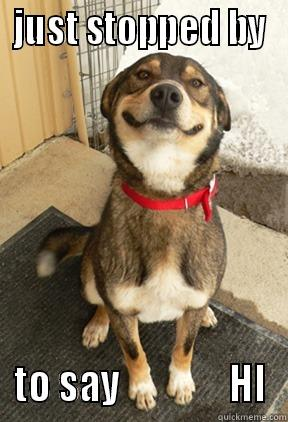
Se volete fare colpo e ottenere le risposte più concrete: andate laggiù. Fare o morire, non ci sono tentativi.
7. Adottare un approccio individuale
La chiave per vincere nei follow-up o in qualsiasi altra tattica di vendita/marketing che coinvolga la scala e l'automazione è fare in modo che il potenziale cliente si senta coinvolto in prima persona nella soluzione dei suoi problemi.
Questo inizia con l'invio iniziale. Non accontentatevi di azzeccare il nome di battesimo, ma assicuratevi che il vostro valore e il vostro messaggio siano adatti alle persone a cui state inviando le e-mail. Il ruolo, il settore, le dimensioni dell'azienda e l'area geografica sono tutte variabili da tenere in considerazione quando si elabora il messaggio. Se volete davvero fare un salto di qualità, utilizzate uno strumento come CrystalKnows per scoprire i tipi di personalità dei vostri potenziali clienti e creare diversi tipi di testo per far sì che il vostro messaggio arrivi nel miglior modo possibile.
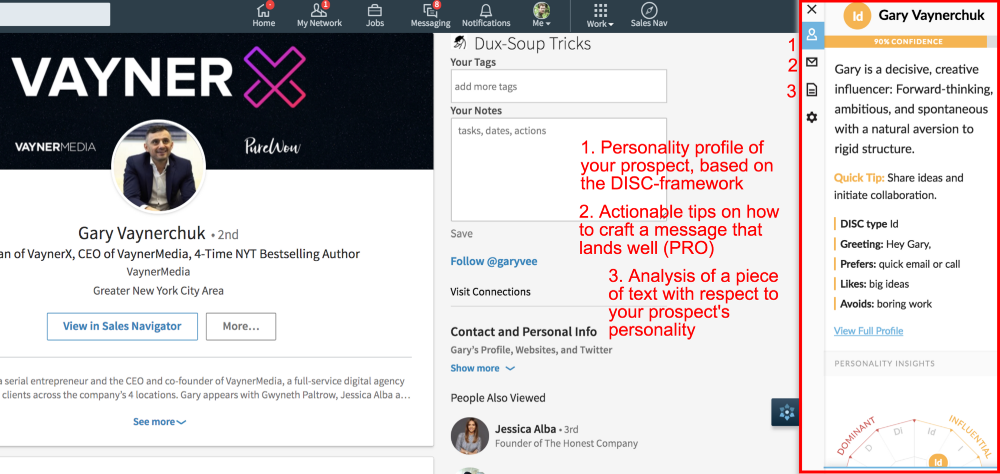
Potete usare i dati di Crystal per creare una serie di e-mail fredde allineate alla personalità e/o usarli nei vostri follow-up non appena un lead è entrato nella vostra pipeline di vendita. Se volete sapere come automatizzare il reperimento dei dati sulla personalità dai profili LinkedIn con Crystal, contattatemi su Messenger.
Dal momento in cui si entra in modalità follow-up, è tutta una questione di contesto. Per farlo bene occorre tutta l'empatia e la diligenza che si può mettere in campo.
Che si segua due o sette volte, che lo si faccia ogni giorno o ogni settimana, che ci si limiti all'e-mail o che si utilizzino diversi mezzi di comunicazione, tutto dipende dalla situazione in cui si trova il potenziale cliente, dalla relazione e dalle interazioni che si sono avute con lui/lei. È tutta una questione di contesto.
Non si segue un amministratore delegato di un'azienda Fortune 500 come si fa con un millennial marketer di una startup SaaS. Il primo riceve migliaia di e-mail ogni giorno, il secondo probabilmente risponderà entro dieci minuti e vi invierà una richiesta di connessione su LinkedIn.
8. Mantenere un linguaggio breve, dolce, chiaro, conciso e specifico.
Non perdete tempo. Né il vostro né quello del vostro potenziale cliente.
Sappiamo che siete innamorati del vostro prodotto, ma descrivere il perché in tre lunghi paragrafi non farà sì che il vostro potenziale cliente provi la stessa sensazione. Potrebbe anche non leggerlo. Quando apro un'e-mail e vedo un pezzo di testo, il mio riflesso è di cestinarla all'istante. Non posso farci niente, succede e basta.
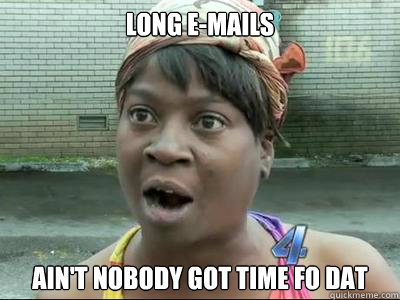
Non si possono forzare né controllare i sentimenti e le convinzioni delle persone. Perdersi troppo in chiacchiere sui prodotti dimostra una mancanza di empatia e allontanerà il potenziale cliente anziché attirarlo. Andate al punto, affrontate il dolore o il problema che stanno affrontando e mostrate come potete risolverlo in modo da suscitare la loro curiosità.
Questa piccola interazione non riguarda voi, ma loro e il modo in cui potete aiutarli. Dedicate le vostre parole a una storia che abbia come protagonista il vostro destinatario e rendetela abbastanza avvincente da spingerlo a voler sapere cosa succederà dopo, facendogli fare clic su quella CTA che lo porterà a visitare il vostro sito web o a fissare una telefonata con voi.
9. Aiutate il vostro potenziale cliente ad andare avanti con le Call-To-Action
Le CTA sono fondamentali per garantire un flusso costante di informazioni. Dovreste avere un obiettivo per ogni email di follow-up che inviate e rendere facile per i vostri clienti raggiungerlo. Non spetta a loro decidere cosa succederà dopo.

Invitateli a iniziare la vostra prova, offrite il download del vostro ultimo ebook, inviate un link al vostro calendario, invitateli nel vostro gruppo Facebook. Dovete avere un'idea chiara di ciò che volete ottenere in quale fase dell'imbuto di vendita e avere CTA specifiche per indurre i vostri clienti a salire nell'imbuto.
10. Aggiungere un pizzico di divertimento
Poche cose al mondo sono così contagiose e comunicative come il buon umore.
Se anche voi siete già stati seguiti in passato, sapete quanto poco impatto abbia la milionesima e-mail di "semplice controllo". Ma cosa succede se la persona dall'altra parte aggiunge Spongebob Squarepants per rompere la noia.

O questa giraffa impaziente.

Il miglior esempio di follow-up di un'e-mail divertente in cui mi sia mai imbattuto è quello degli anatroccoli:
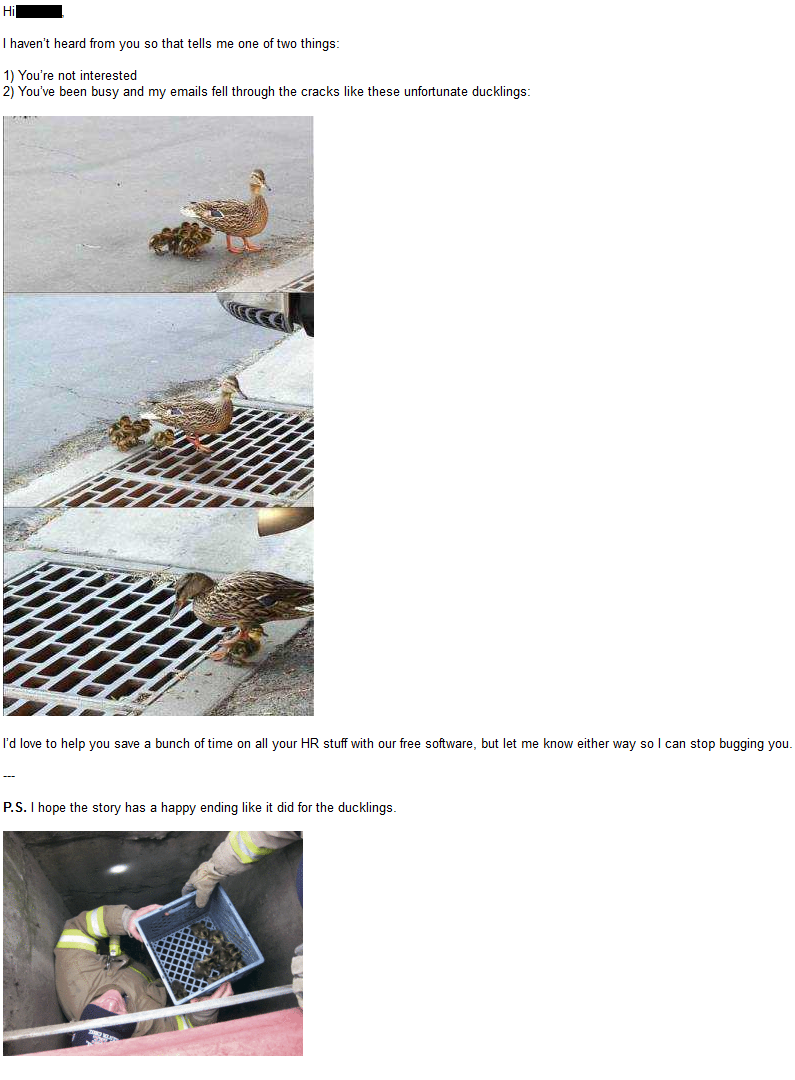
Ci sono tonnellate di cose che si possono fare con GIF, meme e semplicemente con la vecchia copia. Siate creativi e vedete cosa vi colpisce.
Far ridere qualcuno è il modo più breve per entrare in sintonia con qualcuno, e vi distinguerà da tutte le e-mail "per assicurarsi che siate ancora interessati a questo".
11. Sfoderate sempre il vostro sorriso virtuale più bello
Per la maggior parte delle persone, la casella di posta elettronica è un flusso infinito di frustrazione. Traboccante di e-mail non lette, è un elenco infinito di cose da fare.
Non alimentate la loro sensazione di disagio chiamandoli in causa perché non vi rispondono. Frasi come "ti ho già mandato 3 e-mail" o "dimmi che non sei interessato" non faranno altro che ritorcersi contro di te. È probabile che il vostro interlocutore si senta già in colpa per non avervi risposto, e farli sentire ulteriormente in colpa non cambierà la situazione.
Cambiate le cose e affrontate questa sensazione di ansia come un'opportunità. Siate più grandi e fate finta di niente se prima siete stati "ignorati". Continuate a trasmettere una vibrazione di positività e disponibilità. Il potenziale cliente svilupperà sentimenti positivi nei vostri confronti se riuscirete a farlo sentire a suo agio quando prima si sentiva in ansia.
Trattate ogni interazione come una nuova occasione per stabilire una relazione, essendo sempre positivi.

Ricapitolazione
Sia che si tratti di lead freddi o di tutto il processo di vendita, il follow-up vi farà ottenere più vendite.
- Farlo davvero è la cosa più importante. Non prendete il silenzio per un rifiuto. Il gioco può finire solo con un "sì" o un "no". Tutto il resto è una rinuncia.
- Per fare di più, automatizzate tutto ciò che non ha bisogno del vostro tocco umano e utilizzate uno strumento CRM efficiente, in modo da essere sempre all'avanguardia. Ogni singolo potenziale cliente merita la vostra massima pazienza, empatia e disponibilità, e non potete dargliela se siete bloccati a svolgere un inutile lavoro amministrativo per tutto il tempo.
- Rimanete al passo con i tempi, ma sappiate quando è il caso di fermarvi. Tre volte il silenzio non equivale necessariamente a un rifiuto, ma cinque volte molto probabilmente sì. Non si tratta di non infastidire i potenziali clienti, ma di dedicare il vostro tempo a quelli più qualificati.
- Diminuite la frequenza delle e-mail con il passare del tempo. Se il vostro potenziale cliente non ha risposto alle prime tre e-mail di follow-up in una settimana, è probabile che non sia in grado di entrare in contatto con voi in quel momento. L'invio di una quarta e-mail poco dopo li infastidirà piuttosto che cambiare le cose.
- Giocate però a lungo termine. Come dice il proverbio: il vostro valore netto è la vostra rete. Anche se il vostro valore non è immediatamente rilevante per un potenziale cliente, non si sa mai come potreste aiutarvi a vicenda in futuro. Le relazioni significative vi porteranno avanti, negli affari e nella vita.
- Non fidatevi del vostro cervello per ricordare quando fare un follow-up, vi deluderà. Impostate invece dei promemoria di follow-up e automatizzate del tutto le e-mail di routine.
- Usate il cervello per comunicare con i vostri clienti. Scoprite cosa li fa emozionare, create il vostro messaggio per adattarlo al loro caso specifico e usate l'umorismo per distinguervi dal rumore. Guidateli nella loro narrazione e verso obiettivi intermittenti.
- Infine, non limitatevi alle e-mail per costruire un rapporto con alcuni. C'è molto di più.
La persona dall'altra parte è un essere umano proprio come voi. Se siete in grado di mettervi nei suoi panni e di fornire un valore rilevante, non dovreste lasciare che qualcosa vi scoraggi dal seguirlo. Non sentitevi mai in colpa per il fatto che il vostro lavoro è aiutare le persone.
Volete vedere altri modi per utilizzare l'automazione delle e-mail? Date un'occhiata a questi casi d'uso video di flussi di lavoro via e-mail realizzati dai nostri clienti.
Ultimo aggiornamento:
- I 20 migliori libri di vendita che Elon Musk sta probabilmente leggendo - 14 Febbraio 2023
- 6 modi infallibili per far ottenere alla vostra startup i primi 100 clienti - 6 dicembre 2022
- Come costruire un imbuto di vendita che venda - 2 Settembre 2021
